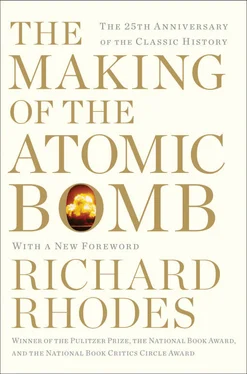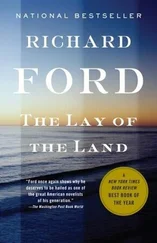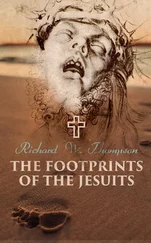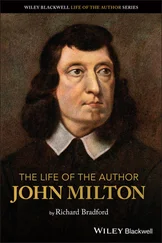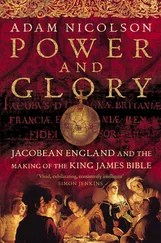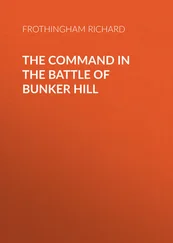But the discovery offered a new way to study the nucleus. Physicists had been confined so far to bouncing radiation off its exterior or measuring the radiation that naturally came out of the nucleus during radioactive decay. Now they had a technique for probing its insides as well. Rutherford and Chadwick soon went after other light atoms to see if they also could be disintegrated, and as it turned out, many of them—boron, fluorine, sodium, aluminum, phosphorus—could. But farther along the periodic table a barricade loomed. The naturally radioactive sources Rutherford used emitted relatively slow-moving alpha particles that lacked the power to penetrate past the increasingly formidable electrical barriers of heavier nuclei. Chadwick and others at the Cavendish began to talk of finding ways to accelerate particles to higher velocities. Rutherford, who scorned complex equipment, resisted. Particle acceleration was in any case difficult to do. For a time the newborn science of nuclear physics stalled.
* * *
Besides Rutherford’s crowd of “boys,” several individual researchers worked at the Cavendish, legatees of J. J. Thomson. One who pursued a different but related interest was a slim, handsome, athletic, wealthy experimentalist named Francis William Aston, the son of a Birmingham gunmaker’s daughter and a Harborne metal merchant. 512As a child Aston made picric-acid bombs from soda-bottle cartridges and designed and launched huge tissue-paper fire balloons; as an adult, a lifelong bachelor, heir after 1908 to his father’s wealth, he skied, built and raced motorcycles, played the cello and took elegant trips around the world, stopping off in Honolulu in 1909, at thirty-two, to learn surfing, which he thereafter declared to be the finest of all sports. Aston was one of Rutherford’s regular Sunday partners at golf on the Gogs in Cambridge. It was he who had announced, at the 1913 meeting of the British Association, the separation of neon into two isotopes by laborious diffusion through pipe clay.
Aston trained originally as a chemist; Röntgen’s discovery of X rays turned him to physics. J. J. Thomson brought him into the Cavendish in 1910, and it was because Thomson seemed to have separated neon into two components inside a positive-ray discharge tube that Aston took up the laborious work of attempting to confirm the difference by gaseous diffusion. Thomson found that he could separate beams of different kinds of atoms by subjecting his discharge tube to parallel magnetic and electrostatic fields. The beams he produced inside his tubes were not cathode rays; he was working now with “rays” repelled from the opposite plate, the positively charged anode. Such rays were streams of atomic nuclei stripped of their electrons: ionized. They could be generated from gas introduced into the tube. Or solid materials could be coated onto the anode plate itself, in which case ionized atoms of the material would boil off when the tube was evacuated and the anode was charged.
Mixed nuclei projected in a radiant beam through a magnetic field would bend into separated component beams according to their velocity, which gave a measure of their mass. An electrostatic field bent the component beams differently depending on their electrical charge, which gave a measure of their atomic number. “In this way,” writes George de Hevesy, “a great variety of different atoms and atomic groupings were proved to be present in the discharge tube.” 513
Aston thought hard about J. J.’s discharge tube while he worked during the war at the Royal Aircraft Establishment at Farnborough, southwest of London, developing tougher dopes and fabrics for aircraft coverings. He wanted to prove unequivocally that neon was isotopic—J. J. was still unconvinced—and saw the possibility of sorting the isotopes of other elements as well. He thought the positive-ray tube was the answer, but though it was good for general surveying, it was hopelessly imprecise.
By the time Aston returned to Cambridge in 1918 he had worked the problem out theoretically; he then began building the precision instrument he had envisioned. 514It charged a gas or a coating until the material ionized into its component electrons and nuclei and projected the nuclei through two slits that produced a knife-edge beam like the slit-narrowed beam of light in a spectrograph. It then subjected the beam to a strong electrostatic field; that sorted the different nuclei into separated beams. The separated beams proceeded onward through a magnetic field; that further sorted nuclei according to their mass, producing separated beams of isotopes. Finally the sorted beams struck the plateholder of a camera and marked their precise locations on a calibrated strip of film. How much the magnetic field bent the separated beams—where they blackened the strip of film—determined the mass of their component nuclei to a high degree of accuracy.
Aston called his invention a mass-spectrograph because it sorted elements and isotopes of elements by mass much as an optical spectrograph sorts light by its frequency. The mass-spectrograph was immediately and sensationally a success. “In letters to me in January and February, 1920,” says Bohr, “Rutherford expressed his joy in Aston’s work,” which “gave such a convincing confirmation of Rutherford’s atomic model.” 515Of 281 naturally occurring isotopes, over the next two decades Aston identified 212. He discovered that the weights of the atoms of all the elements he measured, with the notable exception of hydrogen, were very nearly whole numbers, which was a powerful argument in favor of the theory that the elements were assembled in nature simply from protons and electrons—from hydrogen atoms, that is. Natural elements had not weighed up in whole numbers for the chemists because they were often mixtures of isotopes of different whole-number weights. Aston proved, for example, as he noted in a later lecture, “that neon consisted, beyond doubt, of isotopes 20 and 22, and that its atomic weight 20.2 was the result of these being present in the ratio of about 9 to 1.” 516That satisfied even J. J. Thomson.
But why was hydrogen an exception? If the elements were built up from hydrogen atoms, why did the hydrogen atom itself, the elemental building block, weigh 1.008 alone? Why did it then shrink to 4 when it was packed in quartet as helium? Why not 4.032? And why was helium not exactly 4 but 4.002, or oxygen not exactly 16 but 15.994? What was the meaning of these extremely small, and varying, differences from whole numbers?
Atoms do not fall apart, Aston reasoned. Something very powerful holds them together. That glue is now called binding energy. To acquire it, hydrogen atoms packed together in a nucleus sacrifice some of their mass. This mass defect is what Aston found when he compared the hydrogen atom to the atoms of other elements following his whole-number rule. In addition, he said, nuclei may be more or less loosely packed. The density of their packing requires more or less binding energy, and that in turn requires more or less mass: hence the small variations. The difference between the measured mass and the whole number he expressed as a fraction, the packing fraction: roughly, the divergence of an element from its whole number divided by its whole number. “High packing fractions,” Aston proposed, “indicate looseness of packing, and therefore low stability: low packing fractions the reverse.” 517He plotted the packing fractions on a graph and demonstrated that the elements in the broad middle of the periodic table—nickel, iron, tin, for example—had the lowest packing fractions and were therefore the most stable, while elements at the extremes of the periodic table—hydrogen at the light end, for example, uranium at the heavy—had high packing fractions and were therefore the most unstable. Locked within all the elements, he said, but most unstably so in the case of those with high packing fractions, was mass converted to energy. Comparing helium to hydrogen, nearly 1 percent of the hydrogen mass was missing (4 divided by 4.032 = .992 = 99.2%). “If we were able to transmute [hydrogen] into [helium] nearly 1 percent of the mass would be annihilated. On the relativity equivalence of mass and energy now experimentally proved [Aston refers here to Einstein’s famous equation E = mc 2], the quantity of energy liberated would be prodigious. Thus to change the hydrogen in a glass of water into helium would release enough energy to drive the ‘Queen Mary’ across the Atlantic and back at full speed.” 518
Читать дальше
